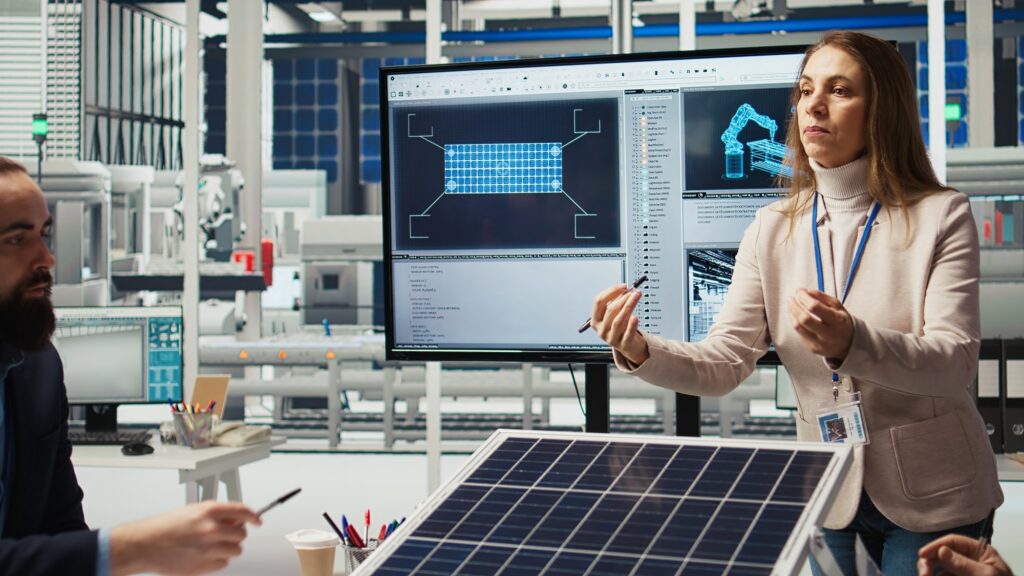
The electricity sector is undergoing transformation with the world moving towards energy transition and net zero. While renewable energy looks set to flourish amid this backdrop, integrating renewable energy (RE) into the power grid has become both a priority and a challenge. With the growth of variable renewable sources, grid operators are rethinking traditional methods of managing electricity supply and demand. Artificial intelligence (AI) is stepping in to cater to these challenges and it’s fundamentally changing how solar energy is produced, managed, and consumed.
1. Enhanced Solar Panel Efficiency
Advanced machine learning algorithms analyze vast amounts of data from weather conditions to panel performance metrics to optimize energy output. AI powered solar tracking systems can automatically adjust panel angles in real time to follow the sun’s movement, maximizing efficiency throughout the day. Moreover, AI can detect micro-level issues such as shading from nearby objects or partial dirt coverage, allowing for quicker intervention and minimal energy loss.
2. Accurate Forecasting and Energy Planning
Solar energy’s intermittency nature is one of the key issues when it comes to energy planning. AI is emerging as a game-changer in weather and solar generation forecasting. Using satellite imagery, historical data, and real-time weather inputs, AI models can accurately forecast solar energy production. These predictions allow energy providers to better balance the grid, reduce reliance on fossil fuel backups, and plan for energy storage or load shifting in advance.
3. Predictive Maintenance
Downtime and inefficiencies due to faults in solar installations can lead to significant revenue losses. AI-driven predictive maintenance tools can help in reducing the number of faults by analyzing data from sensors, drones, and thermal cameras to identify potential issues e.g., computer vision systems can scan large solar farms and detect anomalies like panel cracks, overheating, or dirty surfaces. Which can help developers in maintaining high system uptime and improve the overall return on investment.
4. Automated Deployment
Installing solar power systems requires careful design and planning. AI tools are now being used to automate site assessments, generate optimal panel layouts, and even predict ROI for customers. For example, software platforms like Aurora Solar use AI to remotely analyze rooftops, simulate shading, and generate professional-grade designs remotely.
5. Enabling Dynamic Energy Market
Integrating AI with battery storage systems revolutionizes the timing of energy storage and release, allowing providers to adapt to real-time market conditions and fluctuating energy demands. With the excess energy from renewables, these battery storage systems can be co-located with solar installations, synergistically enhancing energy use. This dynamic trading capability enhances stored energy utilization, maximizes profitability and ensures a balanced supply and demand in the energy market.
However, there are multiple risks and challenges associated with AI implementation like cybersecurity risks, data quality and availability, high upfront cost and technical expertise, regulatory and ethical challenges etc. Therefore, solar industry should not invest only in innovation, but also in robust, ethical, and resilient system to ensure clean energy and AI synergize to meet energy and climate goals efficiently and sustainably.
Suddhasatta Kundu
Director – Power Sector Advisory
Nangia Andersen LLP
A member firm of [global.andersen.com] Andersen Global

